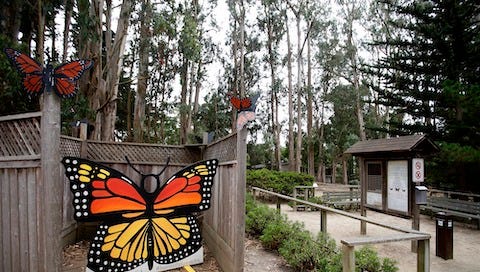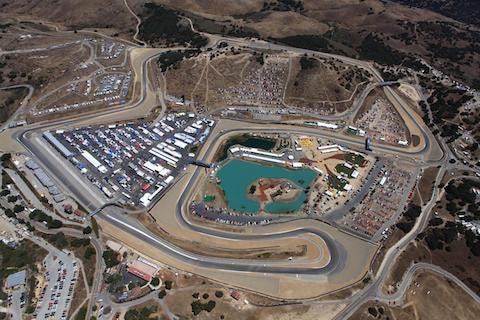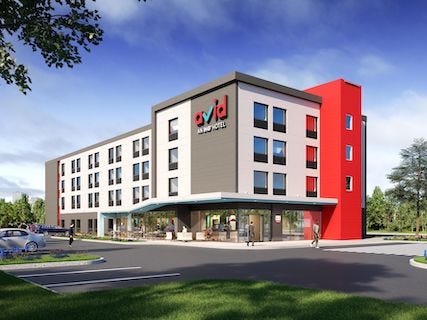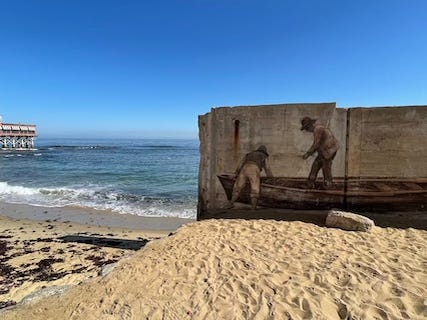This Week on the Central Coast
Laguna Seca gets funding, Avid Hotels comes to Monterey County, Monarchs making a comeback
Monterey settles on a plan to refurbish Laguna Seca
This week, John Narigi, the principal of the company that operates Laguna Seca Raceway, made a request to Monterey’s board of supervisors. In his request, he asked for $750,000 to work on three main projects for the raceway.
The first project would replace the start and finish bridge, which fans cross over to reach the interior portion of the track. The bridge is about 50 years old and supervisors agreed that the bridge had significant dry rot and mold. The second project would be to re-pave the track, which would obviously help to attract more races. The third project would make unspecified upgrades at one of the turns. Narigi believes these upgrades are critical to keeping corporate partners.
The article goes on to explain that the $750,000 is an initial funding for the first year. The actual total cost would be about $9.5 million with $8.7 million being provided in the next two years. Naturally, there were many differing opinions of whether it is in the city’s interest to provide such funding. One board member argued that the requested amount of money could be used for social services, rather than to “support an industry that isn’t paying its employees a liveable wage.” Other board members see Laguna Seca as a “nationally-known, iconic racetrack” with the potential to “become a similar year-round draw as the aquarium.”
As a sort of compromise, the board approved the initial $750,000, but also passed a motion that requested staff to come up with other options to pay for the projects within 45 days.
Intercontinental Hotel Group is bringing another hotel to Monterey
A new 42-room hotel is planned to be built on the site of Caruso’s Corner and the Casa Verde Inn on North Fremont Boulevard. Monterey’s community development director, Kim Cole, said “We’re really excited to see this hotel get approved. North Fremont needs revitalisation.” The building will be a four-story Avid Hotel, which is owned by the Intercontinental Hotel Group. It will be the first Avid Hotel in California. The developer agreed to build a fifteen-foot sound wall to help lessen the effect of construction noise on the nearby communities. They also agreed to not work on Sundays or holidays. However, nearby properties have still requested an appeal.
In light of the drought, Monarchs are making a comeback
In 2020, the monarch butterfly sanctuary in Pacific Grove did not observe a single butterfly. This year, the sanctuary has counted 2600 so far. That drastic increase could be partially thanks to the extreme drought conditions of California. Monarchs favor warm, dry conditions for migration. They breed in inland California, then travel to other nearby states, and finally come back to the coast. Researchers at the Xerces Society, which works to protect invertebrates, are optimistic that numbers will increase even more by next month due the dry weather. When asked if fires impact the butterflies’ migration, researchers said there was been no evidence that they do.
The number of monarch butterflies have been dwindling since the ‘80s, with numbers declining by 99%. They are considered to be on the brink of extinction. The main reasons for the loss of butterflies is due to habitat loss and pesticide exposure. To help combat this, California has recently invested in their conservation, “such as spending $1 million on habitat restoration”. This includes planting milkweed and flowering plants, which are used by the butterflies for reproduction and food.
However, conservationists say more needs to be done and are currently trying to acquire federal funding to further help the butterflies. The Xerces society is also fighting to get monarchs listed under the Endangered Species Act, which they are currently excluded from.
Also in the news…
Turn 12 is hosting a pumpkin carving contest on Monday, October 25, at 9:30PM. Judging will be at midnight with prizes for the winners.
The Carmel Mission completed its $4 million restoration project of the Downie Museum just in time for its 250th anniversary. The project made improvements to its earthquake structure, increased the interior exhibit space, added handicap-accessible restrooms, and fixed flooding issues with the basilica, as well as other improvements.







